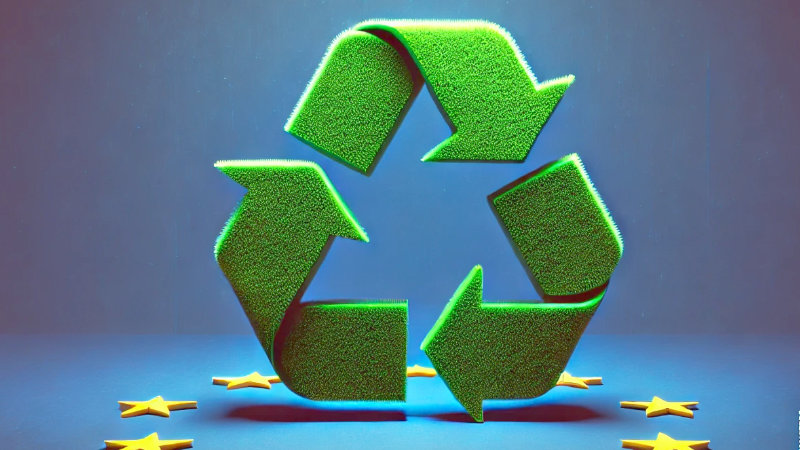Lithium-ion batteries (LIBs) power our modern world, from smartphones and laptops to electric vehicles (EVs) and renewable energy storage. However, as demand significantly increases, so does the challenge of managing battery waste sustainably. Recognizing this, the European Union (EU) has implemented a comprehensive regulatory framework to enhance lithium-ion battery recycling, aiming to create a circular economy while reducing environmental impact.

The EU Sustainable Batteries Regulation
The EU Sustainable Batteries Regulation (EU) 2023/15421, enacted in August 2023, is a landmark policy designed to promote sustainability throughout the battery lifecycle. It replaces the previous Battery Directive (2006/66/EC)2 and introduces stricter measures to ensure batteries are collected, recycled, and reused efficiently.
Key Objectives:
- Sustainability and Safety: Ensuring that batteries have a low carbon footprint, enhanced durability, and reduced hazardous material content.
- Circular Economy Integration: Encouraging material recovery and the reintegration of critical raw materials into new batteries.
- Transparency and Responsibility: Mandating traceability and responsible sourcing of raw materials
Recycling targets and collection measures
The new regulation sets ambitious collection and recycling targets for various battery types, including lithium-ion batteries. Producers are required to achieve a 63% collection rate for waste portable batteries by end of 2027, increasing to 73% by the end of 2030. For light means of transport (LMT) batteries, such as those used in e-bikes and e-scooters, the targets are set at 51% by end of 2028 and 61% by 2031.
In terms of recycling efficiency, the regulation establishes a target for lithium recovery from waste batteries, aiming for 80% by 2031. For copper, cobalt, lead, and nickel, recovery targets are at 95% by 2031. These targets may be adjusted based on technological advancements and market developments.
To drive a closed-loop recycling system, the regulation imposes minimum recycled content levels for new batteries starting in 2031. This means 16% for cobalt, 85% for lead, 6% for lithium, and 6% for nickel.
Synergy between regulation and innovation
The EU’s regulatory measures and initiatives like BeyondBattRec are mutually reinforcing: First of all, BeyondBattRec’s innovations aim to meet and exceed the stringent recycling efficiency and material recovery targets set by the EU regulation. Second, the project focuses on developing cutting-edge recycling technologies, such as advanced mechanical pre-treatment, hydrometallurgial processes, and direct recycling methods to improve efficiency and sustainability. By enhancing recycling processes, the initiative aims to reduce reliance on raw material extraction, lower environmental impact, and foster a circular economy within the EU.
Future Outlook
The EU’s lithium-ion battery recycling policies set a high standard for the rest of the world. By enforcing stringent collection, recycling, and sustainability requirements, these regulations contribute to reducing environmental impact, conserving critical materials, and supporting a cleaner energy future. The connection between regulatory frameworks and innovative projects like BeyondBattRec positions Europe as a leader in sustainable battery management.


